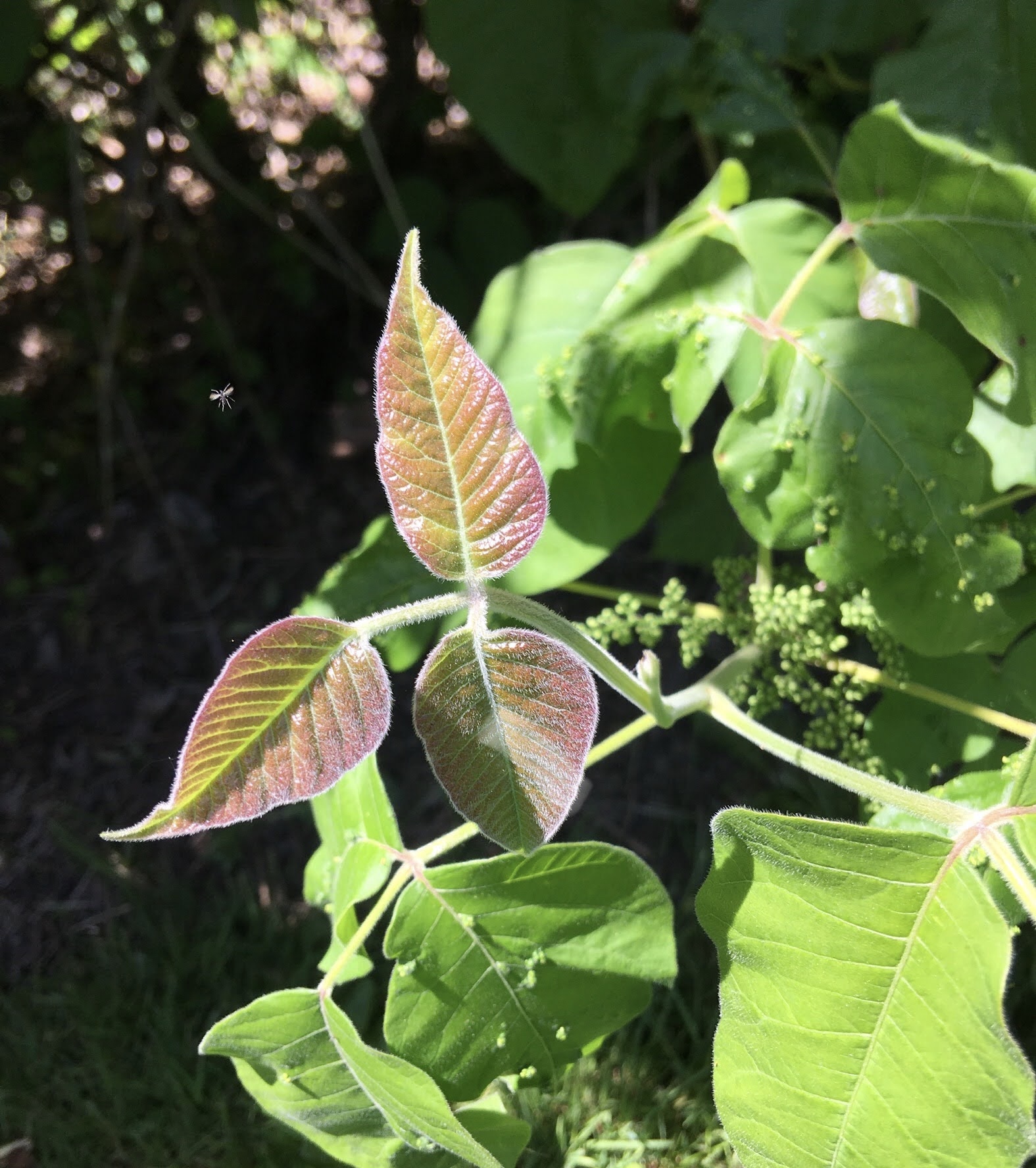Anyone who has ever had an allergic reaction to poison ivy is likely not a big fan. The itch can be unbearable and the rash isn’t exactly easy on the eyes. As a common plant throughout Ohio, it is extremely important to know how to identify poison ivy and treat any reactions.
We’re going to uproot common poison ivy myths and share tips and tricks for treating an allergic reaction.

It may be surprising to hear, but poison ivy is a native plant in CVNP and fills a niche in our ecosystem. The foliage, or collective leaves, provide cover for small animals and birds. Several species of animals even feed on the berries of poison ivy! (It’s important to note that humans are NOT one of the animals that should be eating poison ivy berries.)
Poison ivy produces an oil called urushiol, which helps the plant retain water, but causes an itchy and sometimes painful rash when it comes in contact with the skin. It is this oil—easily transferred from surface to surface—that causes the uncomfortable reaction.

Myths about Poison Ivy
1. Poison ivy is contagious.
The rash is NOT contagious. The reaction happens when urushiol comes in contact with skin. What seems like the rash spreading with contact is most likely the oil being transferred from place to place. It can sit on surfaces almost indefinitely, so if the oil gets on something that you later touch, you can develop a rash.
2. Some people are immune.
Unfortunately everyone has the capacity to have a reaction to urushiol. For some people, it takes a lot more—like getting into a thick patch or repeated exposures over time—to develop the rash. So even if you haven’t had it before, any exposure presents the possibility.
3. You should burn poison ivy plants to get rid of them.
Absolutely false! This could be very dangerous as it can aerosolize the urushiol, allowing it to be inhaled. Poison ivy is best removed by hand or machine and disposed of with your trash pickup. Professional remediation is recommended for large growths.
4. Leaves of three, let it be.
It’s true that poison ivy plants have three leaves, but so do many other harmless plants. It is important to take other ID factors into account. That being said, it’s always best to leave plants and animals alone—especially in CVNP.

Keys to Identifying Poison Ivy
Poison ivy can grow as a small plant on the ground or a climbing vine. The shrub form can be between one to two feet tall while the climbing form can range from three to twelve feet or more in length. Stems of the climbing form have small aerial roots that give the vines a fuzzy appearance.
The plant has clusters of three leaves. The leaf edges can be smooth—typical of more mature leaves—or irregular, asymmetrical and ridged. Because the plants can have new and old leaves, it’s important to look at the whole plant when identifying, rather than just one leaf or cluster.
Clusters of small, yellow or greenish inconspicuous flowers form in the leaf axils during June and July. Male and female flowers are produced on separate plants. Small green to grayish white berries form in the flower clusters several weeks after flowering. These berries have a waxy appearance, are subdivided into several seed chambers, and turn yellow, white or tan later in the growing season.
Test your skills with this quiz on identifying different types of poison ivy!
Tips for Treatment
If you do develop a rash—do not scratch the blisters! The bacteria from under your fingernails can cause an infection.
The rash and itch will normally disappear in a couple of weeks without any treatment. To relieve the itch, use a wet, cold compress. You can also check your local pharmacy for a number of over-the-counter skin protectants, creams and medicines that help relieve irritation.
See a doctor if the rash is widespread and severe, the itching gets worse, the itching does not improve after a few weeks, the rash affects your eyes, mouth, or private area, you are having difficulty breathing, or if you develop a fever.
The Conservancy is a nonprofit friends group for Cuyahoga Valley National Park. Our goals are to improve visitor experiences, and provide meaningful, life-enhancing programs to our communities. If you would like to join us in protecting the Cuyahoga Valley National Park, please consider supporting your park today.





